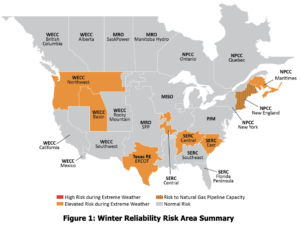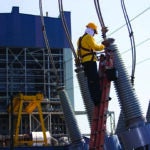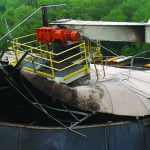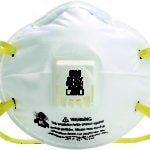If a conveyor belt does not perform according to the manufacturer’s claims—by wearing prematurely, ripping too easily, or disintegrating due to excessive heat or because of oil penetration—the risk to life and limb is relatively small. Yes, it can be very expensive, but it is generally not life-threatening. But if a fire retardant conveyor belt does not resist fire the way that it should, then it can literally “convey” a fire throughout the site, resulting in catastrophic consequences (Figure 1).
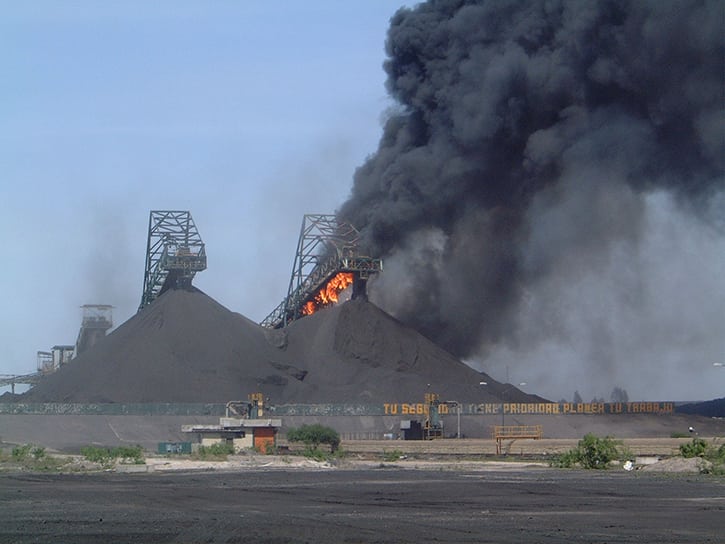 |
| 1. A coal conveyor fire can be disastrous. Courtesy: Dunlop |
The discovery that a belt is not sufficiently fire retardant is only likely to be made after it is too late. Anecdotal, as well as factual, evidence gained from laboratory testing indicates that many users of conveyor belts, including power stations, may be using belts that are not as resistant to fire as they are supposed to be. In a growing number of instances, many sites that should be using fire resistant belting are operating with non-fire-resistant belts simply in the pursuit of cost savings.
At the same time, insurance companies are becoming increasingly concerned. According to at least one major insurer, claims for fires directly involving conveyor belts are costing an average of nearly $8 million per claim (Figure 2).
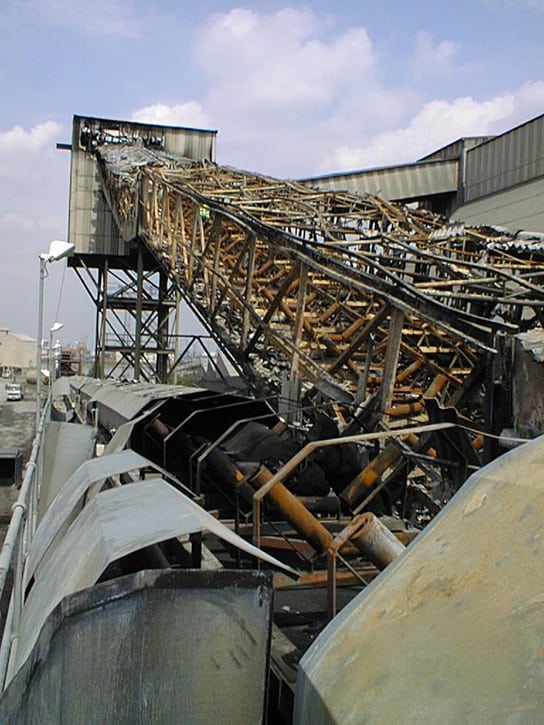 |
| 2. Pay me now or pay me later. Courtesy: Dunlop |
No Conveyor Belt Is Fireproof
Fire retardency standards and test methods applied to conveyor belts are becoming increasingly stringent and can be very confusing. The first and most important thing to bear in mind is that conveyor belts cannot be totally fireproof. Using special additives and chemicals, the rubber used in the top and bottom covers that protect the carcass of the belt and the rubber skim between the fabric plies of the carcass can be engineered to resist fire, but the complete structure of the belt cannot be made fireproof.
The fabrics used in the carcass of the belt most commonly contain polyester and nylon. These materials have little or no resistance to fire. In other words, every belt will burn when it is exposed to a naked flame that is sufficient to ignite the belt. When choosing a fire retardant conveyor belt, deciding on the actual level of fire retardency needed for a specific application or environment is of crucial importance.
The information that follows references several European standards for testing and selecting conveyor belts. Although standards may vary, the ultimate conclusions are applicable to conveyor belt users worldwide.
Environments with Inflammable Dust and Gas
EN 12882 is the standard for safety requirements for conveyor belts for general-purpose use (not underground). The most basic electrical and flammability safety requirement is EN 12882 Category 1. For environments where coal dust or other potentially combustible materials are involved, the conveyor belt must not be allowed to create static electricity that could ignite the atmosphere. Belts need to be able to pass any electrical charge through the metal frame of the conveyor structure down to earth rather than allowing static electricity to build up.
One conveyor belt manufacturer has taken the requirement a step farther. Dunlop decided that the safest approach was for all of its belts to be anti-static and conform to EN/ISO 284 international standards. Therefore, all of its belts can be used in ATEX 95 (94/9/EC Directive) classified zones. Some people mistakenly believe that all belts used in ATEX classified zones must be flame retardant, but actually that is not the case.
ATEX regulations apply to industrial environments where there is a risk of explosion because dust or gas is present in the atmosphere. For those organizations that are buying conveyor belts for use in ATEX regulated areas, it is very important to ask potential suppliers for a copy of a certificate provided by an appropriate independent testing authority, such as the German Institute Dekra Exam GmBH.
Interestingly, a belt’s anti-static properties also provide a good indication of the quality of the rubber used on the belt. All (black) rubber belts contain carbon black, which is an ingredient in the rubber compound needed to achieve good mechanical properties. The higher the quality of carbon black used to produce the rubber compound, the better the anti-static properties it will have.
Above-Ground and General Service Applications
Because fire safety is such an important issue, there are numerous safety classifications and international standards for which there are many different tests used to measure the self-extinguishing properties of conveyor belts. Rubber belts reinforced by layers of textile fabrics (multi-ply) or steel cord reinforcement are the most commonly used type above ground and in general service applications. The basis of most tests for belting used in normal industrial applications is EN/ISO 340. This standard makes the distinction between fire resistance with covers (K) and fire resistance with and without covers (S).
The relevance of “with and without covers” is that as belt covers wear during their operational life, the amount of fire resistant rubber protecting the flammable carcass reduces. The best way to decide between K and S grades is to consider the material being carried. For moderately abrasive materials, such as grain biomass for example, K grade is usually adequate. This also applies to elevator belts. However, if the material is abrasive and tends to wear the top cover quite rapidly, then the safest option is to choose the S (EN 12882 Class 2B) grade.
In both K and S grades, the rubber skim that bonds the fabric layers of the carcass together should also be fire resistant. In the case of S grade (fire resistant with and without covers), the rubber skim should be thicker than the skim used for K grade. The easiest way to tell if an S grade belt has the required thicker rubber skims is to obtain technical datasheets from the manufacturer for both S and K grades and compare the carcass thickness figures.
Another important reason that buyers should always request technical datasheets before placing an order is that they include information on the level of abrasion (wear) resistance. The ingredients used to create a fire resistant rubber compound generally have an adverse effect on its wear resistant properties. Consequently, fire resistant belts tend to wear faster, and as the thickness of the rubber reduces, so does the level of protection given to the inflammable carcass. To avoid premature wear, in the case of purely fire resistant belting, buyers should always demand an average abrasion resistance level of no more than 150 mm³. In the case of abrasion resistance test results, lower figures represent better resistance to wear.
Rubber compound technicians at Dunlop have developed a fire resistant rubber that also has good resistance to abrasion. In fact, the compound has 50% better wear resistance than the DIN Y standard for abrasion resistant rubber. This means that the belt retains its resistance to fire for much longer and at the same time extends the operational lifetime by the same proportion. However, laboratory tests have revealed that this is very much an exception to the rule within the conveyor belt industry.
EN/ISO 340 Testing
EN/ISO 340 tests involve exposing six samples of belt to a naked flame, causing them to burn. The source of the flame is then removed and the combustion time (duration of flame) of the test piece is recorded. A current of air is then applied to the test piece for a specified time after removal of the flame. The flame should not re-ignite.
The time it takes for the belt sample to self-extinguish is then measured. The duration of continued burning (visible flame) should be less than 15 seconds for each sample with a maximum cumulative duration of 45 seconds for each group of six tests. This factor is of paramount importance because it effectively determines how far the fire can be carried along a moving belt.
Even if a manufacturer states that its fire resistant belt has passed the ISO 340 test, the buyer should still exercise caution. A typical conveyor belt can easily travel more than 40 meters within the 15 seconds sufficient for a belt sample to pass the test. This would still allow the belt to carry flames over a potentially dangerous distance. For this reason, Dunlop set an internal required time limit standard of no more than 1 second. Therefore, it is suggested that buyers of fire resistant belt ask to see copies of the test results and check that the laboratory conducting the tests has EN ISO 17025 certification.
How Much Fire Resistance Do You Need?
One of the most difficult challenges for users of conveyor belts is establishing the correct level or standard of fire resistance needed. For the vast majority of belts being used in open air, EN 12882 Class 2A or 2B is adequate. Class 2A demands that the belt is able to pass the ISO 340 test described earlier with the covers intact on the belt samples (K grade). Class 2B requires that the belt also pass the ISO 340 test with the top and bottom cover rubber removed (S grade). As mentioned previously, the electrical conductivity of the belt must also meet the requirements of ISO 284.
If you are still unsure of the fire resistant grade of belting needed, it is best to carry out an internal risk assessment. If the expertise for this does not exist within your company, there are a number of external organizations (including many insurers) that can perform this function for you.
For conveyors carrying materials that contain oil, such as wood chips and biomass, rubber compounds that are resistant to fire, abrasion, and oil are available. There are two types of oil resistance—mineral and vegetable. This is yet another important consideration when deciding on the correct type of fire resistant belt, so buyers should be very specific when making requests for quotations from manufacturers and suppliers.
CEN Fire Test Standards
One of the most problematic aspects of fire testing rubber conveyor belts for industrial use above ground is that most of the test methods were established many years ago specifically for underground mining belts. Independent testing institutions must compete the complex and costly testing (Figure 3). Because of environmental regulations, large-scale gallery fire tests now involve using a 12-meter-long container filled with carbon to filter the smoke emissions before they are released into the atmosphere. In order to be awarded a safety standard certificate, every belt type has to be independently tested. For some tests a minimum of 20 meters of belt is needed.
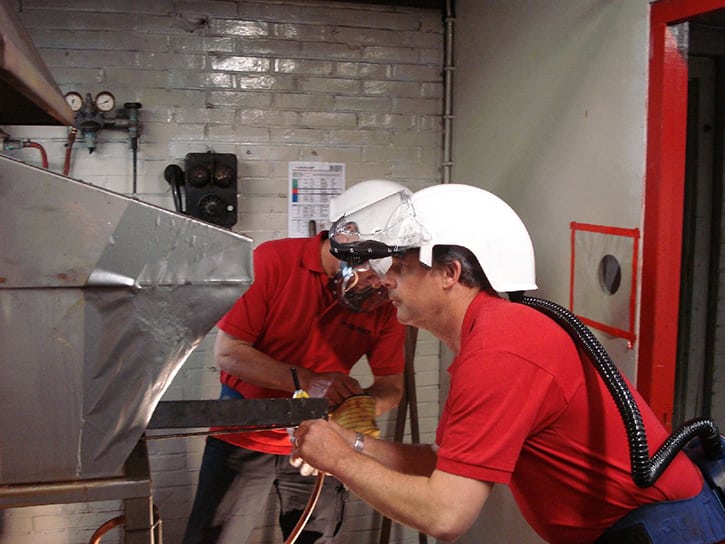 |
| 3. Conveyor belt fire resistance testing is very involved. Courtesy: Dunlop |
Such tests can easily cost up to €20,000 ($27,500). For the manufacturers of solid woven underground mining belts and steel cord belting, this is not a particularly big problem because there are a relatively small number of different belt types that have to be supplied for testing in large quantities. Although the test certificates are valid for several years, these large-scale tests present a huge and costly problem to manufacturers of rubber belting for above ground use, because there is a much wider range of belt types. Such complex test methods have made it extremely difficult to develop improved levels of fire safety, because if a belt sample fails the tests, then the technicians have to go back to the drawing board to make further changes to the rubber compound and then embark on another round of expensive tests.
Apart from hindering development of fire resistant belting, it also means that it is very difficult to adequately test those belts that manufacturers claim reach specific levels of fire resistance. This is one of the reasons that there are so many end users operating conveyors fitted with belts that provide totally inadequate levels of fire safety.
New Standards Coming
The CEN standards committee recognized the problem, and over recent years it has been trying to find a solution. Following recent meetings attended by technical experts from all over Europe, the Committee European de Normalization will be introducing several positive changes in 2014.
Agreement has been reached on using and adapting existing tests for quality standards such as DIN and BS that will involve much smaller scale tests using much smaller equipment. This will mean that major manufacturers will be able to experiment and carry out testing in their own laboratories. Ironically, these new test methods will actually be even more demanding than the old, large-scale tests. Major insurance companies are already showing interest and are becoming involved in the discussions. For them, and for all genuinely safety-conscious organizations, this can only be very good news.
Don’t Play with Fire
Although manufacturers and suppliers may be able to provide test certificates, in some cases that certificate may only relate to the belting that the manufacturer produced for test certification purposes. The actual belt delivered to a site may not be up to the required standard. For greater peace of mind, it is suggested that an extra meter of belt be ordered and that the piece be tested by an accredited testing authority or laboratory. The price of not exercising caution simply cannot be calculated.
It should also be noted that conveyor belts used underground might be subject to different test methods and fire safety standards. In such cases, it is always recommended to consult with the manufacturers of conveyor belts for further evaluation prior to use below ground.
—Sytze Brouwers is the chief application engineer for Fenner Dunlop BV (Dunlop Conveyor Belting) in The Netherlands, chairman of the international standards (ISO and CEN) committee, and one of the world’s leading authorities in conveyor belting.





